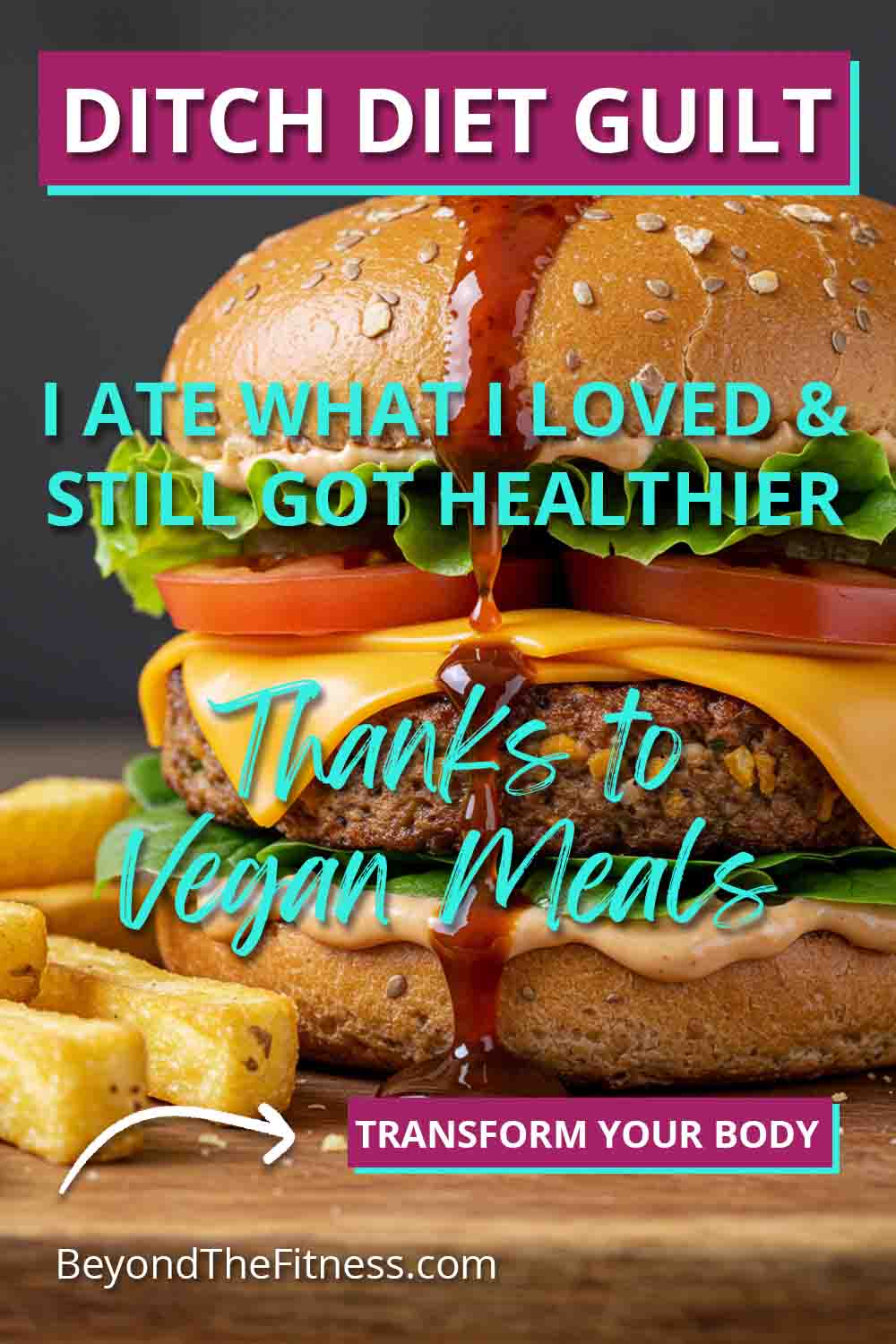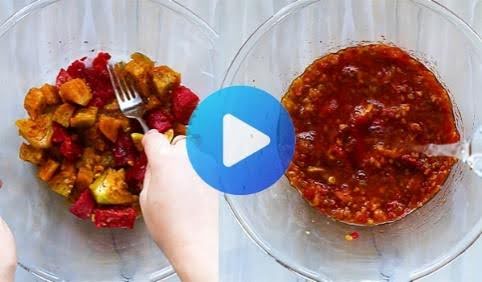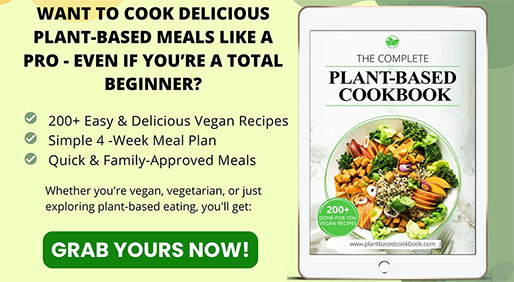Thinking about eating more plants or going fully vegan can feel exciting. But sometimes, there’s a little worry. Will I miss my favorite foods? Does eating vegan mean giving up everything I love? I hear this a lot, especially from women starting their health journey. It’s a valid concern. Food is more than just fuel; it’s comfort, culture, and enjoyment. The good news is you absolutely do not have to feel deprived. You can still enjoy comforting, delicious meals that remind you of your favorites, just made in a new, plant-based way. It’s about switching things up, not giving things up.
Let’s explore how you can make this transition feel like an adventure in flavor, not a restriction. We’ll look at simple swaps, tasty recipes, and how this way of eating can support your health and weight management goals.
What Does Eating Vegan Mean Anyway?
First, let’s quickly cover what being vegan involves. It means eating foods that come only from plants. This includes fruits, vegetables, nuts, seeds, grains, beans, and lentils. Vegans avoid all animal products. This means no meat (like beef, pork, chicken), no poultry (like turkey), no fish or seafood, no dairy (like milk, cheese, yogurt), no eggs, and often no honey (since it comes from bees).
Insider Tip: Enjoying Healthy and Flavorful Plant-Based Dishes with The Complete Plant Based Recipe Cookbook
Some people choose veganism for health reasons, others for environmental concerns, and many for animal welfare reasons. Whatever the reason, a well-planned vegan diet can be incredibly healthy and provide all the nutrients your body needs.
Nutrition on a Vegan Diet: Getting What You Need
When you remove animal products, you need to be mindful of getting certain nutrients from plant sources. This is totally doable and can be delicious. As a fitness and weight loss consultant, I always emphasize the importance of balanced nutrition, especially for women.
Protein Power
Protein helps build and repair tissues, and it keeps you feeling full, which is great for managing weight. People often worry about protein on a vegan diet, but there are tons of plant-based sources.
- Beans: Black beans, kidney beans, chickpeas, pinto beans. Great in chili, salads, and burgers.
- Lentils: Red, green, brown lentils. Perfect for soups, stews, and making “meat” loaf or bolognese sauce.
- Tofu and Tempeh: Made from soybeans. Tofu takes on the flavor of whatever you cook it with. Tempeh has a firmer texture and nutty taste. Both are awesome stir-fried, baked, or grilled.
- Seitan: Made from wheat gluten. It has a very meaty texture, good for replacing chicken or beef in recipes.
- Nuts and Seeds: Almonds, walnuts, chia seeds, flaxseeds, pumpkin seeds. Add them to oatmeal, smoothies, or eat as snacks. Nut butters are great too.
- Whole Grains: Quinoa, oats, brown rice, whole wheat bread. These offer protein along with fiber.
- Vegetables: Even veggies like broccoli and spinach contain some protein.
Aim to include a protein source in each meal.
Iron Intake
Iron is super important, especially for women, as it helps carry oxygen in your blood. Low iron can lead to tiredness. Plant-based iron (non-heme iron) isn’t absorbed as easily as iron from meat (heme iron). But you can boost absorption.
- Good Sources: Lentils, chickpeas, beans, tofu, cashew nuts, chia seeds, ground linseed, hemp seeds, pumpkin seeds, kale, dried apricots and figs, raisins, quinoa, and fortified breakfast cereal.
- Boost Absorption: Eat iron-rich foods with foods high in vitamin C. Think beans with tomatoes, lentils with bell peppers, or adding lemon juice to a spinach salad. Vitamin C helps your body grab onto that plant-based iron.
- Avoid with Iron: Tea and coffee can hinder iron absorption, so try not to drink them right with your meals.
Calcium for Strong Bones
Calcium is key for bone health. While dairy is a well-known source, plenty of plants offer calcium too.
- Plant Sources: Fortified plant milks (soy, almond, oat – check the label), calcium-set tofu, leafy greens (kale, collard greens, bok choy, but not spinach as its calcium isn’t well absorbed), beans, almonds, sesame seeds (tahini).
- Absorption: Getting enough Vitamin D helps your body absorb calcium.
Vitamin D – The Sunshine Vitamin
Vitamin D works with calcium for bone health and supports your immune system. Our bodies make it when our skin is exposed to sunlight. However, factors like location (hello, Canadian winters), skin tone, and sunscreen use can limit production.
- Food Sources: Fortified foods are the main dietary sources for vegans. Look for fortified plant milks, cereals, and some vegan margarines. Mushrooms exposed to UV light can also contain some Vitamin D.
- Supplementation: Many people, vegan or not, may benefit from a Vitamin D supplement, especially during darker months. It’s best to talk to your doctor about this.
The Crucial Vitamin B12
Vitamin B12 is essential for nerve function and making red blood cells. It’s primarily found in animal products. This is one nutrient vegans must pay attention to.
- Reliable Sources: Fortified foods are the way to go. Check labels on plant milks, breakfast cereals, nutritional yeast, and some vegan spreads.
- Supplementation: Relying only on fortified foods can be tricky. Most health professionals, including myself, strongly recommend that vegans take a regular Vitamin B12 supplement to ensure they get enough. It’s easy and prevents deficiency.
Planning your meals with these nutrients in mind ensures your vegan journey supports your health and energy levels, making weight management feel more natural.
Change Your Mindset: It’s About Abundance
One of the biggest hurdles I see is the feeling of missing out. Instead of thinking, “I can’t have cheese,” try thinking, “What amazing creamy cashew sauce can I make?” Veganism isn’t about taking things away; it’s about discovering a whole new world of ingredients and flavors.
Think about the variety:
- Grains: Oats, quinoa, rice, barley, farro, couscous, pasta, bread.
- Legumes: Hundreds of types of beans, peas, and lentils.
- Vegetables: A rainbow of colors and textures – leafy greens, root veggies, cruciferous veggies, nightshades.
- Fruits: Sweet, tart, juicy – berries, melons, citrus, tropical fruits.
- Nuts and Seeds: Almonds, walnuts, cashews, chia, flax, hemp, sunflower, pumpkin.
The possibilities are huge. You get to be creative in the kitchen, trying new recipes and combinations. It’s an expansion, not a limitation.
Making Your Favorites Vegan: Simple Swaps
Okay, let’s get practical. How do you take that beloved cheesy pasta or juicy burger and make it vegan? It’s often easier than you think. It comes down to swapping out the animal-based ingredients for plant-based ones.
Meat Swaps
- Ground Meat: Use lentils (brown or green work well), finely chopped mushrooms, crumbled tofu or tempeh, or store-bought vegan ground. Great for bolognese, chili, tacos, shepherd’s pie.
- Burgers: Make patties from black beans, chickpeas, lentils, quinoa, or mushrooms. Or try store-bought vegan burgers (many options available now).
- Chicken: Tofu (pressed and seasoned), tempeh, seitan, or large oyster mushrooms can mimic chicken texture in stir-fries, curries, or “chicken” salads. Jackfruit (young, green jackfruit in brine) has a shredded texture perfect for pulled “pork” or “chicken”.
- Sausages/Hot Dogs: Many excellent vegan sausages and hot dogs are available in stores.
Dairy Milk Swaps
- In Drinks/Cereal: Soy milk, almond milk, oat milk, cashew milk, rice milk, coconut milk (the beverage kind). Try different ones to find your favorite taste and creaminess. Oat milk is often a favorite for coffee.
- In Cooking/Baking: Most plant milks work as a 1:1 substitute for dairy milk in recipes. Unsweetened, plain varieties are usually best for savory dishes.
Cheese Swaps
This is often seen as the toughest one, but vegan cheese has come a long way.
- Cheesy Flavor: Nutritional yeast (“nooch”) is a deactivated yeast with a savory, cheesy, nutty flavor. Sprinkle it on pasta, popcorn, roasted veggies, or blend it into sauces. It’s a game-changer.
- Creamy Sauces (Mac & Cheese, Alfredo): Blend soaked cashews with water/plant milk, nutritional yeast, and seasonings. Cooked potatoes and carrots can also be blended into a surprisingly cheesy sauce.
- Ricotta: Crumbled firm tofu mixed with nutritional yeast, lemon juice, garlic powder, and herbs makes a great ricotta substitute for lasagna or stuffed shells.
- Shredded/Sliced Cheese: Many brands now make vegan shreds and slices (cheddar, mozzarella, provolone styles) that melt reasonably well. They are great for pizza, grilled cheese, and casseroles. Taste varies by brand, so experiment.
Egg Swaps
- Scrambled: Tofu scramble is fantastic. Crumble firm tofu and sauté it with onions, turmeric (for color), black salt (kala namak, for an eggy sulfur taste), and nutritional yeast. Add veggies like spinach or peppers.
- Baking (Binding):
- Flax egg: 1 tablespoon ground flaxseed + 3 tablespoons water. Let sit for 5 minutes to thicken.
- Chia egg: 1 tablespoon chia seeds + 3 tablespoons water. Let sit for 5-10 minutes.
- Applesauce: 1/4 cup unsweetened applesauce per egg. Good for moisture.
- Mashed banana: 1/2 medium banana per egg. Adds moisture and some banana flavor. Best in things like muffins or pancakes.
- Commercial egg replacers: Available in stores, follow package directions.
- Baking (Leavening): Baking soda and vinegar can help with lift.
Butter Swaps
- Spreading: Many vegan butter brands taste very similar to dairy butter. Look for them in the refrigerated section. Avocado or nut butters are also great spreads.
- Cooking/Baking: Vegan butter usually works 1:1. Coconut oil (refined for neutral flavor, unrefined for coconut flavor), olive oil (for savory cooking), or other vegetable oils can also be used depending on the recipe.
Honey Swaps
- Maple syrup, agave nectar, date syrup, or brown rice syrup work well as liquid sweeteners instead of honey.
Vegan Makeover Examples: Bringing It to Life
Let’s see how these swaps work in some favorite dishes.
The Mighty Burger
- Patty: Mash a can of black beans with breadcrumbs, sautéed onions/garlic, spices (cumin, chili powder), and a flax egg to bind. Form patties and pan-fry or bake. Or use grilled portobello mushrooms, thick slices of seasoned tofu, or a store-bought veggie burger.
- Bun: Most regular burger buns are vegan, but check ingredients for milk, eggs, or honey just in case.
- Toppings: Lettuce, tomato, onion, pickles are naturally vegan. Use vegan mayo, ketchup, mustard. Add avocado or guacamole. Try vegan cheese slices.
Creamy Mac and Cheese
- Pasta: Use your favorite shape.
- Sauce: Blend 1 cup soaked raw cashews, 1/2 cup water or plant milk, 1/4 cup nutritional yeast, 1 tablespoon lemon juice, 1 teaspoon garlic powder, 1/2 teaspoon onion powder, salt and pepper. Gently heat the sauce (don’t boil) and pour over cooked pasta. Another popular method uses boiled potatoes and carrots blended with seasonings and nutritional yeast.
- Optional: Top with toasted breadcrumbs or vegan bacon bits before baking (if desired).
Perfect Pizza
- Crust: Many store-bought crusts or dough balls are vegan. Or make your own simple yeast dough with flour, water, yeast, salt, and a little oil.
- Sauce: Use regular tomato sauce or pizza sauce.
- Toppings: Load up on veggies – mushrooms, peppers, onions, olives, spinach, artichoke hearts, pineapple. Add seasoned crumbled tofu or vegan sausage.
- Cheese: Sprinkle with nutritional yeast for flavor, use dollops of cashew ricotta, or use store-bought vegan mozzarella shreds.
Tasty Tacos and Burritos
- Filling: Seasoned lentils, black beans, or refried beans (check for lard-free). Sautéed crumbled tofu or tempeh with taco seasoning. Roasted sweet potatoes and black beans. Fajita-style peppers and onions.
- Shells/Wraps: Corn or flour tortillas are usually vegan.
- Toppings: Salsa, guacamole, shredded lettuce, chopped onions, cilantro. Make a quick vegan sour cream by blending soaked cashews with lemon juice and a pinch of salt, or buy a vegan sour cream alternative.
Dreamy Ice Cream
- Nice Cream: Blend frozen bananas until smooth and creamy like soft serve. Add cocoa powder for chocolate, other frozen fruit for different flavors, or peanut butter. Eat immediately.
- Cashew/Coconut Base: Many recipes online use blended cashews or full-fat coconut milk as a base for richer, scoopable ice cream made in an ice cream maker or using a no-churn method.
- Store-Bought: The vegan ice cream section is exploding. You can find pints made from almond milk, soy milk, oat milk, cashew milk, and coconut milk in tons of flavors.
Delicious Baked Goods (Cookies, Cakes, Muffins)
- Fat: Use vegan butter, coconut oil, or sometimes applesauce or avocado.
- Eggs: Use flax eggs, chia eggs, applesauce, or mashed banana depending on the recipe’s needs (binding vs. moisture).
- Milk: Use any unsweetened plant milk.
- Sweetener: Sugar is usually vegan, but some white sugar is processed with bone char. Look for organic sugar, beet sugar, or explicitly vegan-labeled sugar if this is a concern. Maple syrup and agave work well in many recipes.
You might need to experiment a little, especially with baking, as textures can sometimes be slightly different. But you can absolutely make moist cakes, chewy cookies, and fluffy muffins the vegan way.
Eating Out and Social Life
Going vegan doesn’t mean you have to stay home.
- Restaurant Research: Many restaurants now label vegan options or have separate vegan menus. Apps like HappyCow can help you find vegan-friendly places nearby.
- Look for Clues: Ethnic cuisines often have naturally vegan dishes. Think veggie curries (ask for no ghee/cream), bean burritos (ask for no cheese/sour cream), pasta with marinara sauce, veggie sushi rolls, or lentil soup.
- Communicate: Don’t be afraid to ask questions about ingredients. Politely ask if a dish can be made vegan (e.g., “Can you make the veggie fajitas without oil or butter, and hold the cheese and sour cream?”).
- Social Gatherings: Offer to bring a dish to share. That way, you know there’s something delicious you can eat, and others might be curious to try your amazing vegan creation. Focus on the company and conversation, not just the food.
Vegan Eating for Health and Weight Management
Choosing plant-based versions of your favorite foods can absolutely fit into a healthy lifestyle and support weight management goals.
- Whole Foods Focus: When you make vegan versions using whole ingredients like beans, lentils, vegetables, nuts, and seeds, you’re often getting more fiber, vitamins, and minerals than the original versions. Fiber is fantastic for digestion and helps you feel full, which can prevent overeating.
- Mindful Choices: While vegan junk food exists (chips, cookies, processed faux meats), centering your diet around whole plant foods is key for health. Enjoy the vegan treats and comfort foods, but balance them with plenty of nutrient-dense meals.
- Pair with Exercise: Remember that diet is one part of the equation. Regular physical activity is crucial for weight management, muscle tone, energy levels, and overall well-being. Find activities you enjoy, whether it’s walking, dancing, strength training, or yoga.
Making familiar foods in a new way can make healthy eating feel sustainable and enjoyable, not like a chore. You’re nourishing your body while still getting those comforting flavors you love.
Getting Started: Take It Slow
You don’t have to change everything overnight.
You Might Be Interested In: Exploring Delicious Vegan Recipes With This Cookbook
- Start Small: Try “Meatless Mondays” or aim to make one dinner a week vegan.
- Veganize One Favorite: Pick one beloved dish, like spaghetti bolognese, and try making a vegan version using lentils or mushrooms instead of meat. See how you like it.
- Explore Resources: Look up vegan recipes online (blogs, Pinterest, YouTube are full of them), borrow vegan cookbooks from the library, or try a meal planning app with vegan options.
- Be Patient: It takes time to learn new ingredients and cooking techniques. Don’t worry if something doesn’t turn out perfectly the first time. Keep experimenting.
The journey is about progress, not perfection. Celebrate the delicious new meals you discover.
Related YouTube Video
Final Thoughts
Eating vegan doesn’t mean a life of bland salads (unless you love them). It’s entirely possible to enjoy rich, flavorful, satisfying versions of the foods you’ve always loved. By learning simple swaps and embracing the abundance of plant-based ingredients, you can nourish your body, support your health goals, and keep your taste buds happy. Forget deprivation; it’s time to explore the delicious possibilities of vegan cooking. You might just surprise yourself with how much you enjoy it.







